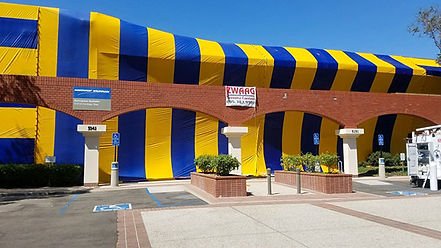Heat Treatments and Commercial Fumigation

A non-chemical, non-toxic heating process to introduce clean, dry heat into a structure to eliminate drywood termites. The wood becomes too hot for termites to survive. This system can penetrate walls to kill termites in otherwise inaccessible areas.



Termites are one of the most destructive pests that can cause significant damage to structures and homes. Termite control is, therefore, essential to protect properties from damage caused by these pests. Two popular termite control methods are heat treatments and commercial fumigation. In this article, we will discuss how these methods work and their advantages and disadvantages.
Heat treatments involve raising the temperature of the infested area to a level that kills the termites. The process involves heating the space to between 120 and 140 degrees Fahrenheit for several hours. This method is effective in killing both drywood and subterranean termites. One of the significant benefits of heat treatments is that they do not involve the use of chemicals, making them an environmentally friendly option. Heat treatments are also quick, with the process taking only a few hours to complete. However, heat treatments can be expensive, and the process requires specialized equipment and expertise.
Commercial fumigation is a method that involves introducing a fumigant into the infested space to kill the termites. The fumigant gas penetrates the wood and other materials, killing termites within the structure. This method is effective in killing all types of termites, including drywood and subterranean termites. Commercial fumigation is ideal for large-scale infestations, and it is a proven method for eliminating termite colonies. However, commercial fumigation can be dangerous if not carried out by a licensed and trained professional. The process also involves the use of chemicals, which can be harmful to the environment and people if not handled correctly.
When choosing between heat treatments and commercial fumigation, it is essential to consider several factors, including the severity of the infestation, the type of termite, and the location of the infested space. For minor infestations, heat treatments may be sufficient. However, for more extensive infestations, commercial fumigation may be necessary.
In conclusion, both heat treatments and commercial fumigation are effective methods for termite control. The choice between these two methods will depend on various factors, including the type of termite and the severity of the infestation. Both methods require professional expertise and specialized equipment, and it is vital to choose a reputable and experienced pest control company for termite control. Whether you choose heat treatments or commercial fumigation, the ultimate goal is to protect your property from the devastating effects of termite damage.

